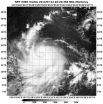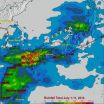(Press-News.org) ST. LOUIS – Children with developmental disabilities are at higher risk for abuse and neglect from parents than children developing at a typical rate. So far, there was little evidence of specific parental behaviors that were associated with the risk, but a SLU study finds inappropriate expectations and lack of empathy play a significant role in triggering the risk.
Debra Zand, Ph.D., associate professor of pediatrics at Saint Louis University and the principal investigator of the project, conducted the study in a small group of parents in St. Louis with 67 participants. Findings of the study were published in Clinical Pediatrics.
"We already know that children with delayed or developmental problems are at 1.7 times greater risk for abuse than children without disabilities. In this study, we wanted to investigate areas of a parent's behavior or reaction that might increase this risk," Zand said.
Zand and her team recruited a group of parents (diverse in race, education and income) with children who have disabilities. Her team found that parents expected more and empathized less than the parents of children who don't have disabilities. The other categories of behavioral measurement included attitudes about punishment, perceived parent-child roles, and oppressing children's power and independence.
"We found that parents have higher expectations from their children, which may result asking them to achieve at a much higher standard than they are capable," Zand said. "We also saw that parents don't empathize toward their child's needs as much as parents of typically developing children, which suggests that these parents may not understand the needs or feelings of their children."
This group of parents often feels stressed and frustrated when their kids don't perform according to their expectations, which may lead to abusive behavior against children, Zand explained.
She says it's acceptable to push children a little out of their comfort zone, so they can grow and learn. But more often than not, parents have a difficult time understanding their child's experience and end up expecting more from them.
Zand believes pediatricians need to assess attitudes of parents that could increase the risk of abuse toward children and hinder the child from reaching his or her full potential.
"Parents often learn about appropriate parental behavior from a doctor, so pediatricians can educate them about healthy ways of dealing with their children," Zand said. "It can be an interactive session in which parents can ask pediatricians suggestions on how to make the situation better for the children."
It's also important for pediatricians to educate parents about the difference between spoiling a child and attending to his or her needs, Zand said.
"In addition to all this, parents need to find strong social support groups and engage in activities that help them be happy and feel competent," she said.
INFORMATION:
Established in 1836, Saint Louis University School of Medicine has the distinction of awarding the first medical degree west of the Mississippi River. The school educates physicians and biomedical scientists, conducts medical research, and provides health care on a local, national and international level. Research at the school seeks new cures and treatments in five key areas: cancer, liver disease, heart/lung disease, aging and brain disease, and infectious disease.
Avoiding abuse: Empathy, realistic expectations key to raising a child with disabilities
2014-07-14
ELSE PRESS RELEASES FROM THIS DATE:
Rethinking fish farming to offset its public health and environmental risks
2014-07-14
As government agencies recommend greater consumption of seafood for its health benefits, a new analysis led by researchers from the Johns Hopkins Center for a Livable Future urges medical and public health professionals to consider the environmental and health impact of seafood sourcing, particularly aquaculture, or the farming of fish, shellfish and crustaceans. The paper appears in the July 2014 issue of the Journal of Current Environmental Health Reports.
Nearly half of all seafood consumed around the world comes from fish farms. Increasing seafood consumption has ...
Expert collaboration is the key to sustainable fish and shellfish farming
2014-07-14
Getting more people to eat seafood because it's a healthier option will need careful planning to ensure that the expansion of the aquaculture sector does not pose a risk to the environment. Business leaders in the sector should not aim only for profits, but rather embrace the principles of the One Health model that sees the health of humans being interwoven with that of animals and the environment. The model brings together experts from various fields to develop sustainable operations that ensure adequate human nutrition, and healthy environments, say Juan Gormaz of the ...
Suomi NPP satellite sees Typhoon Rammasun approaching Philippines
2014-07-14
NASA-NOAA's Suomi NPP Satellite passed over Typhoon Rammasun early on July 14 and captured a visible image of the storm that showed large bands of thunderstorms wrapping into the center as it approached the central Philippines.
When NASA-NOAA's Suomi NPP satellite passed over Rammasun on July 14 at 04:20 UTC, the Visible Infrared Imaging Radiometer Suite (VIIRS) instrument aboard took a visible image of the storm. The VIIRS instrument showed large, thick bands of powerful thunderstorms wrapping into the low-level center of circulation. The largest band extended from the ...
MD Anderson researchers discover new route for ovarian cancer spread
2014-07-14
Circulating tumor cells spread ovarian cancer through the bloodstream, homing in on a sheath of abdominal fatty tissue where it can grow and metastasize to other organs, scientists at The University of Texas MD Anderson Cancer Center report in Cancer Cell.
"This completely new way of thinking about ovarian cancer metastasis provides new potential avenues to predict and prevent recurrence or metastasis," said senior author Anil Sood, M.D., professor of Gynecologic Oncology and Reproductive Medicine and Cancer Biology.
The researchers found the circulating tumor cells ...
NASA adds up Tropical Storm Neoguri's deluge from space
2014-07-14
The once-powerful Super Typhoon Neoguri weakened to a tropical storm when it dropped heavy rainfall over southern Japan during the week of July 7, 2014. NASA and the Japan Aerospace Exploration Agency's Tropical Rainfall Measuring Mission or TRMM satellite measured that soaking from its orbit in space and data was used to create a maps showing the rainfall totals.
Heavy rainfall from Neoguri fell on land that was already soaked earlier this month by a slow moving seasonal frontal system. Neoguri was reported to have caused up to five deaths and 50 injuries in Japan.
Rainfall ...
Say 'no' to interruptions, 'yes' to better work
2014-07-14
Modern office workers are expected to multitask regularly, often juggling multiple projects and priorities over the course of a day. Studies have shown that the typical employee in an office environment is interrupted up to six times per hour, but how does that impact the finished product? New research published in Human Factors evaluates how ongoing interruptions can negatively affect the quality of work.
"People don't realize how disruptive interruptions can be," said Cyrus Foroughi, coauthor of "Do Interruptions Affect Quality of Work?" and a PhD candidate at George ...
Sierra Leone samples: Ebola evidence in West Africa in 2006
2014-07-14
Analysis of clinical samples from suspected Lassa fever cases in Sierra Leone showed that about two-thirds of the patients had been exposed to other emerging diseases, and nearly nine percent tested positive for Ebola virus. The study, published in this month's edition of Emerging Infectious Diseases, demonstrates that Ebola virus has been circulating in the region since at least 2006—well before the current outbreak.
First author Randal J. Schoepp, Ph.D., recently returned from Liberia and Sierra Leone, where he spent six weeks helping to set up an Ebola testing laboratory ...
Scientists deepen genetic understanding of eosinophilic esophagitis
2014-07-14
WHAT:
Scientists funded by the National Institutes of Health (NIH) have identified genetic markers associated with eosinophilic esophagitis (EoE), an inflammatory disease characterized by high levels of immune cells called eosinophils in the esophagus. Their findings suggest that several genes are involved in the development of EoE, which can cause difficulty eating and often is associated with food allergies. The findings also may help explain why the disease specifically affects the esophagus. The work was supported in part by the Consortium of Food Allergy Research, ...
The Lancet Neurology: Personal View looks back on 40 years of the Glasgow Coma Scale
2014-07-14
A group of leading brain injury specialists look back on 40 years of the Glasgow Coma Scale and outline the continuing role of the scale in research and clinical practice, in a new Personal View published in The Lancet Neurology.
The Personal View is published on the 40th anniversary of the Glasgow Coma Scale's introduction in a 1974 Lancet article*. Since this seminal publication, the Glasgow Coma Scale has provided a practical method for bedside assessment of impairment of conscious level, the clinical hallmark of acute brain injury. The scale was designed to be ...
Story tips from the Department of Energy's Oak Ridge National Laboratory, July 2014
2014-07-14
To arrange for an interview with a researcher, please contact the Communications staff member identified at the end of each tip. For more information on ORNL and its research and development activities, please refer to one of our media contacts. If you have a general media-related question or comment, you can send it to news@ornl.gov.
MATERIALS – Rare earth substitute …
An alloy discovered at Oak Ridge National Laboratory holds great promise for permanent magnets as the material retains its magnetic properties at higher temperatures yet contains no rare-earth elements. ...




